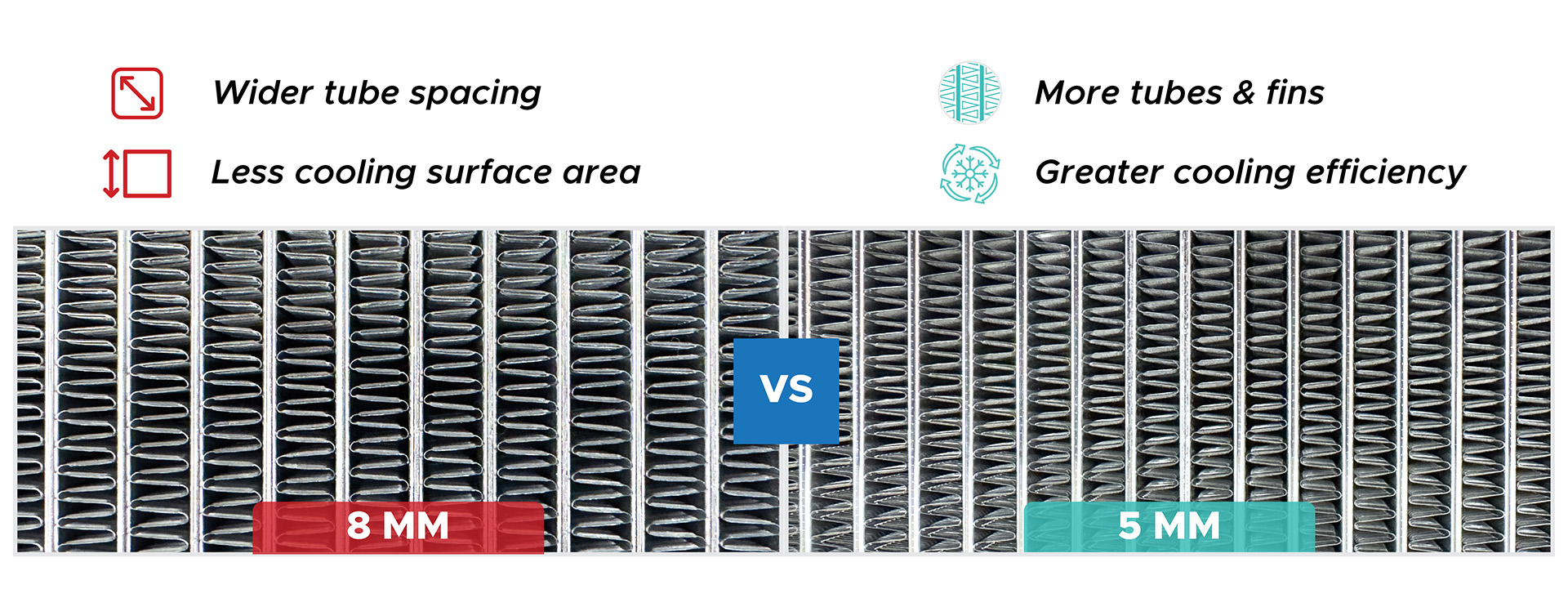5mm Fin Technology: The Next Evolution in Automotive Cooling
As automotive technology evolves, so do the components that ensure optimal vehicle performance. Among the most crucial systems is the cooling system, which prevents engine overheating and maintains efficiency. While traditional radiators have served well for decades, innovations such as 5mm fin technology are ushering in a new era of more efficient and compact cooling solutions. This article explores how radiators function, compares traditional 8mm fin technology with the latest 5mm fin technology, and highlights the transformative impact of this advancement on automotive cooling systems.
Understanding Radiators
Radiators play a vital role in preventing engine overheating. They function by transferring heat away from the engine, maintaining optimal operating temperatures. The process is as follows: the engine heats the coolant, which is then pumped through tubes within the radiator. Attached to these tubes are fins that increase the surface area available for heat transfer, enhancing the radiator's ability to dissipate heat. As air flows over the fins and tubes, heat from the coolant is released, allowing the cooled coolant to be recirculated back to the engine. This continuous cycle ensures efficient engine cooling.
Comparing 8mm and 5mm Fin Technology
Traditional radiators typically feature tubes spaced approximately 8mm apart. This configuration limits the number of tubes and fins, reducing the overall cooling surface area. In contrast, 5mm fin technology allows for closer spacing of the tubes, accommodating more fins in the same physical space, which significantly increases the surface area available for heat dissipation.

The Advantages of 5mm Fin Technology
- Enhanced Cooling Efficiency
The closer spacing of fins and tubes in 5mm fin technology results in a larger surface area for heat release. This allows for more efficient engine cooling, particularly under heavy loads or high-temperature conditions. - Compact Design Without Compromising Performance
Modern automotive designs increasingly prioritize space efficiency. 5mm fin technology enables the creation of thinner radiators that fit into tighter spaces while delivering superior cooling performance compared to their 8mm counterparts. - Lightweight Construction for Improved Fuel Efficiency
Reducing vehicle weight contributes to better fuel efficiency. The lightweight nature of radiators utilizing 5mm fin technology enhances vehicle performance without compromising cooling capabilities. - Demonstrated Superior Performance
Testing indicates that radiators utilizing 5mm fin technology can achieve up to 17.5% better cooling performance compared to those with 8mm fin technology. This improvement is particularly significant in high-performance and heavy-duty applications. - Performance in Low Airflow Conditions
Concerns about reduced airflow due to the denser design of 5mm fin technology are addressed through innovative engineering that ensures effective heat removal, even in low-speed or low-airflow environments. - Sustainability and Environmental Considerations
The implementation of 5mm fin technology supports sustainability by improving fuel efficiency and reducing resource consumption: - Fuel Efficiency: Lighter radiators help vehicles consume less fuel, thus lowering emissions.
- Reduced Material Usage: The smaller design necessitates fewer raw materials, minimizing the environmental footprint.
- Extended Engine Life: Enhanced heat management from 5mm fin technology contributes to cooler engine operation, prolonging engine lifespan and reducing the need for repairs and replacements.
Conclusion:
By offering improved cooling efficiency, a compact design, and significant sustainability benefits, 5mm fin technology is poised to transform the automotive cooling landscape. Whether for cars, trucks, or high-performance vehicles, this advanced technology presents a superior cooling solution that combines effectiveness with environmental responsibility.